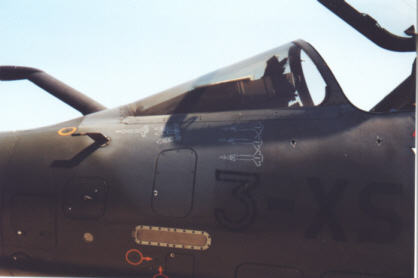2000 D(iesel)
The 2000 D is the AdlA´s premier strike asset.
It is a French "Strike Eagle", albeit with a considerably smaller payload capacity. The 2000D has been, in AdlA service, the breadwinner. It has seen considerable action over Kosovo and Bosnia, during the Yugoslav Republic´s
bloody and tragic disintegration.
The AdlA is the only customer for the D version and has ordered 86 aircraft. France has not cleared the D for export. Thomson-CSF Detexis is developing the RDY radar further and future Dash 5 MkII
upgrades may well feature advanced strike capabilities that rival those of the D.
Despite developments in the field of precision navigation and target aquisition the AdlA wisely chose the two seater configuration for it´s strike
variant. The RAF used single seat Harriers and Jaguars during the Kosovo campaign and the results were generally dissapointing. The RAF attributed it´s poor results to the bad weather but this is unlikely to have been the case. Two pairs
of eyes see better than one pair. The workload is simply too high for a pilot alone to handle.
The D airframe is based on the nuclear strike N variant. The empty weight is often quoted as being 7600 kg, the same as that for the 2000 B
trainer. This is unlikely to be the case. The strengthened fuselage and the added avionics probably add about 300 kg to the basic weight and thus the 2000 D probably has an empty weight of about 7900 kg.
Developed primarily to
operate in typical European weather the D features a terrain following radar (Antelope 50) coupled with a twin Inertial Navigation System (INS).
Where the 2000D differs fundamentally from the F15 Strike Eagle (apart from the obvious
difference in size) is in target aquisition. Whereas the F15E has a large and extremely powerful radar, able to generate photo-like images of the target area, the 2000D Weapon System Officer (WSO) must rely on electro-optical means of
target aquisition(the Antelope 50 has only a very modest mapping capability). The AdlA currently uses two targetting pods, the ATLIS II and PDL-CT. The ATLIS II pod is a daytime -only pod whereas PDL-CT is a thermal imaging pod capable of
day and night operation. The ATLIS II does however feature better daytime performance than the PDL-CT.![]()

